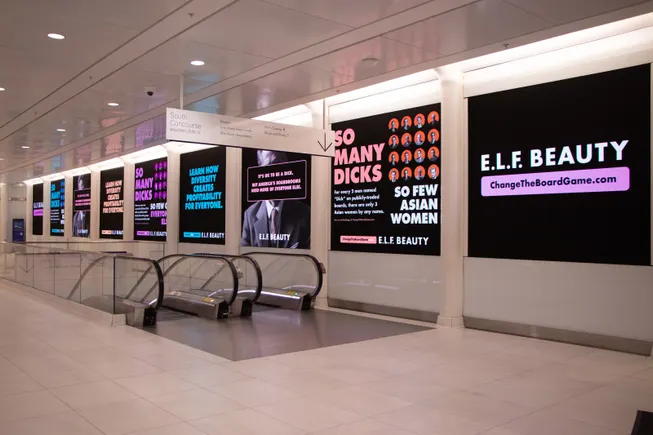- AD150
- Posts
- 52% of marketers now rely on first-party data — here’s what’s next for B2B
52% of marketers now rely on first-party data — here’s what’s next for B2B
As third-party data fades, marketers are rebuilding their ecosystems around trust, consent, and control — turning owned data into the new foundation for scalable, privacy-first growth.
Good morning, ! This week we’re looking at how first-party data now powers 52% of B2B marketing, why AI search is rewriting the top of the funnel, and how email remains the quiet ROI anchor. Plus, we unpack Compliance Corner’s outsized performance and why blending human creativity with AI is driving the next wave of authentic brand growth.
Join 50+ advertisers who reach our 400,000 executives: Start Here.
Know another marketer who’d love this? Pass it along—they’ll thank you later! Here’s the link.
AUDIENCE DATA DIVE
Compliance Corner Performance Deep Dive
Why this section keeps outperforming across B2B financial readers
1. What’s Driving Engagement
Across our latest Compliance Corners, the section continues to punch above its weight, drawing sustained engagement from decision-makers in finance, private equity, and advisory firms.

Average Unique Clicks per Issue: 252
Top Performer: Japan’s PE Rules →strong cross-border appeal
Highest Curiosity: AI Meets IFRS → top-of-funnel attention
Most Loyal Segment: Governance & strategic compliance readers
2. Who’s Reading & Clicking
Compliance Corner isn’t attracting random traffic, it’s reaching core financial operators who make or advise on multimillion-dollar compliance and governance decisions.
Top Reader Segments:
Institutional Investors & Banks: Morgan Stanley, UBS, Credit Suisse, State Street
→ Using the section as regulatory intelligence for operational strategyPrivate Equity & Venture Capital: Verdane, Zetland, RegalHCP, Ogen
→ Clicking heavily on cross-border and ESG insights tied to deal flowsAdvisory & Consulting Firms: IMAP, MCF, Gresham Hunt, Apex, FactSet
→ Tracking policy updates and jurisdictional compliance trends
Behavioral Signals:
Frequent clickers = institutional decision-makers
Cross-issue engagement = high trust and brand recall
Multi-category interest (AI, ESG, Governance) = long dwell time and repeat opens
For advertisers, that means exposure to readers with real influence and active mandates.
3. Why It Performs
The success of Compliance Corner lies in the mix of specificity + professional relevance:
Jurisdictional hooks (e.g., Japan PE rules) drive discovery and sharing
Operational intelligence (AI compliance, ESG due diligence) drives retention
Strategic tone keeps the section credible for senior compliance readers
In short: it’s not clickbait, it’s boardroom bait.
4. Why It Matters for Advertisers
This isn’t just engagement, it’s qualified attention.
High Engagement = High Intent: Readers open and click while in “analysis mode,” ideal for thought leadership, webinars, or solution-driven placements.
Repeat Openers = Prime B2B Buyers: These are professionals with budget authority and decision weight.
Content-Adjacent Credibility: Placing a brand near trusted editorial builds implicit association with expertise and reliability.
Compliance Corner acts as both content value and lead signal, making it one of the most effective verticals for B2B brand alignment, webinars, or regulatory product sponsorships.
5. October Snapshot
Top Story: Japan PE Rules (468 unique clicks)
Most Curious Audience: AI & Automation
Most Shared Insight: Cross-Border Regulatory Reform
Average OR/CTR (all content): 40%+ / 3–5%
Core Audience: Compliance leaders, fund managers, policy specialists
Bottom Line:
Compliance Corner isn’t just performing, it’s building a high-intent professional audience around regulatory intelligence.
That makes it a prime environment for advertisers targeting senior B2B decision-makers in finance, PE, and compliance.
Want your brand featured next to the insights driving compliance decisions? Click here
AD INTEL
First-Party Data Dominates B2B Marketing Strategies

In 2025, first-party data has become the backbone of data-driven marketing, with 52% of marketers naming it their primary source of insight. By contrast, second-party data (18%) and third-party data (8%) have fallen behind as privacy changes make external data less dependable. Even zero-party data—information explicitly shared by customers—accounts for just 12%. This allocation signals a decisive investment shift toward owned data ecosystems, where accuracy and consent matter most. For advertisers, that means ad dollars are increasingly tied to customer engagement tools like quizzes, preference centers, and loyalty programs that fuel richer targeting and personalization. The message is clear: in a privacy-first world, the strongest media performance starts with your own data. (More)
THE FUNNEL REPORT
AI Search Is Rewriting the Top of the Funnel

Generative AI is changing how people search, discover, and engage with brands — and the impact is already measurable. Nearly half of marketers say consumer use of AI for search has increased their web traffic, with 47% in B2B and 45% in B2C reporting positive results. Among younger audiences, 31% of Gen Z now rely primarily on AI platforms or chatbots to find information, signaling a deep behavioral shift away from traditional search engines. For brands, this means rethinking SEO and content strategies to align with AI-driven discovery experiences. In fact, 19% of marketers plan to build SEO strategies tailored for AI search in 2025. As generative tools reshape how audiences find and evaluate information, marketers who adapt early—optimizing content for AI visibility and conversational queries—will own the new front door of the digital funnel. (More)
BUDGET SHIFTS
Smart Budget Shifts: Email’s Quiet ROI Advantage

In an era of fragmented ad spend and rising acquisition costs, email marketing continues to earn its keep. According to Litmus, most marketers in English-speaking markets allocate between 5% and 15% of their total marketing budgets to email. Yet the biggest performance gains come from those investing above the 15% mark, a group that represents the companies with the highest open rates (30–40%) and clickthrough rates above 5%.
The takeaway isn’t to simply pour more money into inboxes. Rather, brands that invest strategically, building better segmentation, creative testing, and automation, unlock higher engagement that justifies larger budgets over time.
As budgets tighten across channels, email stands out as a performance anchor: measurable, adaptable, and directly tied to customer action. For marketers recalibrating 2025 budgets, this might be the best time to double down on what’s quietly working. (More)
BUYER’S ROOM
What B2B Marketers Say Drives Brand Growth

Ask B2B marketers where they’re focusing their efforts, and the message is clear: digital presence matters, but authenticity wins. In a recent survey, 43% of respondents said they’re prioritizing digital marketing and online reach, while 40% emphasized brand storytelling — proof that even in a data-driven world, the human touch still fuels growth. Another 35% are personalizing customer journeys, and 34% are investing in account-based marketing for high-value clients. For buyers, that means campaigns that blend scalable digital tactics with emotional resonance are what stand out. As one insight summed it up: “To stand out as a thought leader, find your unique niche and leverage your unfair advantage.” The takeaway? The smartest B2B marketers aren’t just optimizing for clicks — they’re building genuine, differentiated relationships in an increasingly automated landscape. (More)
CREATIVE THAT CONVERTS
The Limits of AI-Generated Content

While generative AI tools have become central to marketing workflows, 40% of marketers say AI-generated content still “lacks humanity” and feels too robotic. Other top concerns include the risk of plagiarism (34%), inaccurate information (32%), and data privacy issues (31%)—all of which can compromise creative credibility. Nearly a third (29%) also cite poor content quality, showing that automation alone doesn’t guarantee resonance. These findings highlight a key truth: AI can accelerate production, but not emotion. The best-performing campaigns still require human oversight and storytelling nuance to make content feel authentic and brand-aligned. As AI tools evolve, creative teams that blend automation with originality—using GAI for ideation, not imitation—will be the ones converting the most effectively. (More)
CASE STUDY
How Dice Cut Bounce Rates by 50% with Interactive Content
In B2B marketing, PDFs are the silent killers of engagement. Dice, the leading tech career marketplace, realized that static assets were capping both insight and impact. By switching from traditional PDFs to interactive content experiences powered by Foleon, VP of Brand Marketing Dan Martin and his team unlocked content intelligence that reshaped their entire strategy.
The results?
50% decrease in bounce rate using mid-gated experiences
10+ high-value keystone reports created annually
A complete shift from guesswork to measurable audience behavior
Foleon’s analytics engine gave Dice the visibility they lacked, showing where readers dropped off, what sections drove attention, and how interactivity fueled brand value. As Martin put it, “Interactive content is the future of content marketing. It’s changed how we create, deliver, and measure performance.”
For advertisers, the takeaway is clear: format innovation drives intent. Content that feels alive converts, not just clicks, but trust. (More)
INTERESTING ARTICLES
The first step toward success is taken when you refuse to be a captive of the environment in which you first find yourself.
Mark Caine



